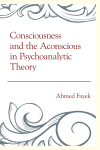Abstract
In the last few decades consciousness has become a major topic of interest for neurologists, psychologists, and a host of other professionals in various disciplines. Their concerted efforts to define consciousness led them mostly to the same impasse: the leap from the body to the mind, or to the particular link that makes the mind an attribute of consciousness. In 1895 Freud put together a project for a Psychology for the Neurologists. It comprised the elements of a theory of consciousness as a manifestation of the continuous homeostatic pursuit of stability; an aconscious condition. Although he made a distinction between the aconscious and the unconscious in many of his important works, he did not clearly define the ways in which the two could co-exist in a unified theory.
In Consciousness and the Aconscious in Psychoanalytic Theory, Ahmed Fayek summarizes current arguments and debates stemming from neurological and phenomenological perspectives. He presents the notion that consciousness needs to be considered a human phenomenon and not simply a manifestation of brain activity, which is an occurrence shared by all organisms. Using Freud’s theories as they relate to consciousness, Fayek places his own theory of the aconscious within the context of Freudian thought.
Schlagworte
Phenomenological\and Functional Trieb Psychoanalysis Unconscious Metaphor and Metonymy Aconsciousness Brain and Mind Consciousness Homeostasis Mental Representation- Kapitel Ausklappen | EinklappenSeiten
- i–xviii Preface i–xviii
- 1–14 1 Consciousness 1–14
- 95–98 Bibliography 95–98
- 99–104 Index 99–104
- 105–105 About the Author 105–105

